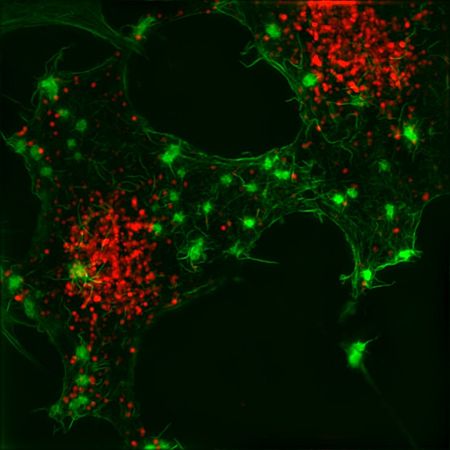LED technology to revolutionise cataract and disease diagnosis
Scientists at Heriot-Watt University have identified molecules within the eye that occur during the formation of cataracts. Using new biochemical information, Heriot-Watt has worked with Edinburgh Biosciences Ltd, together with clinical experts from the University of Edinburgh and partner organisations in Sweden and Denmark, to develop an LED technique. This allows clinicians to examine a florescence signal from proteins in the eye lens. By documenting the changes to the photochemistry of the eye during cataract formation, an objective scale for diagnosis can be created which could save global health services millions annually.
The condition, which is the principal cause of blindness globally and the most common cause of vision loss in those aged over 40 years, is currently treated surgically, after cataract has formed. In the later stages of cataract formation, patients commonly experience cloudy vision prior to treatment. It is also a recognised complication of Type 1 and Type 2 diabetes which affects one in every 25 people living in Scotland.
Professor Rory Duncan, Head of the Institute for Biological Chemistry, Biophysics & Bioengineering at Heriot-Watt University, said: “Rather than waiting for the condition to appear, it could be possible to diagnose and monitor cataract before it forms, allowing preventative measures to be taken where possible. While this stage is not a cure for cataracts, we believe it could have wide reaching benefits such as limiting the symptoms experienced by our increasingly aging population and those living with diabetes. It could significantly diminish the pressure on our health service. We believe that the diagnostic also allows us to determine a patient’s ‘true age’ as opposed to the age on their birth certificate. The technology identifies how much oxidative damage lens proteins have accumulated through lifestyle or environmental factors. This accumulated damage may be important in determining risk factors for a number of age-related conditions. We are in the process of raising further funds to allow us to transfer the technology from the experimental laboratory towards clinical trials, where we will be able to properly assess the utility of the technology.”
Professor Des Smith, FRS, is one of the co-founders of the research. He said: “This research brings us one step closer to developing a non-invasive treatment for cataracts.”
The team will now conduct further studies in pigs to validate the findings, demonstrate safety in humans and explore whether non-invasive treatment is feasible.
The project was conceived by Professor Des Smith, FRS, one of the founders of Heriot-Watt’s Riccarton Campus, and Professor Baljean Dhillon, Professor of Clinical Ophthalmology, University of Edinburgh and hon. Consultant Ophthalmology Princess Alexandra Eye Pavilion, Edinburgh. The team also includes Dr Lina Kessel and Professor Michael Larsen at Glostrup Hospital in Copenhagen.
The research was funded by the NHS (NIHR), the UK Medical Research Council, and a range of commercial partners. This research has also received funding from Techcomp Europe Ltd and the European Union ICT Policy Support Programme as part of the Competitiveness and Innovation Framework Programme – CATACURE project (Grant agreement no. 621088). Professor Smith funded part of the research personally, demonstrating his passion for the work.
For further information about Professor Duncan’s work, visit http://www.lifescienceinterface.info/index/Welcome.html
